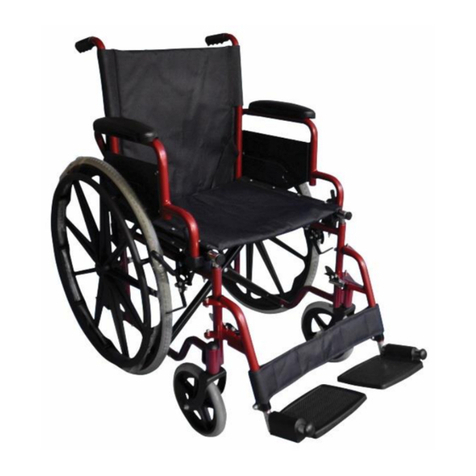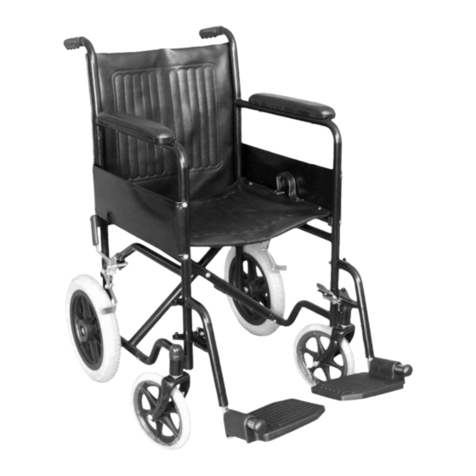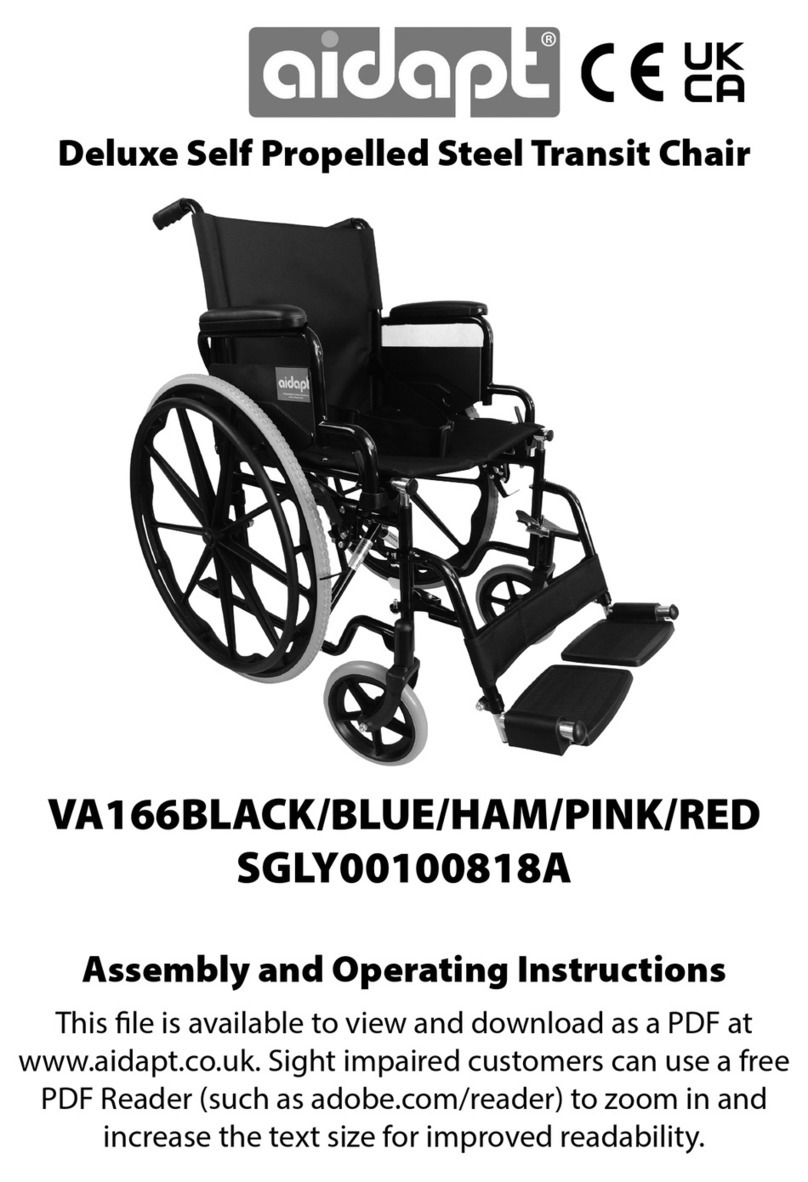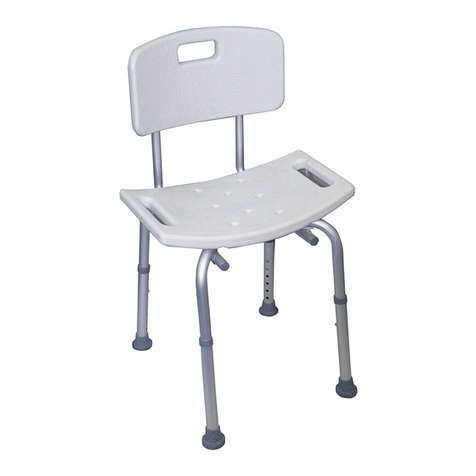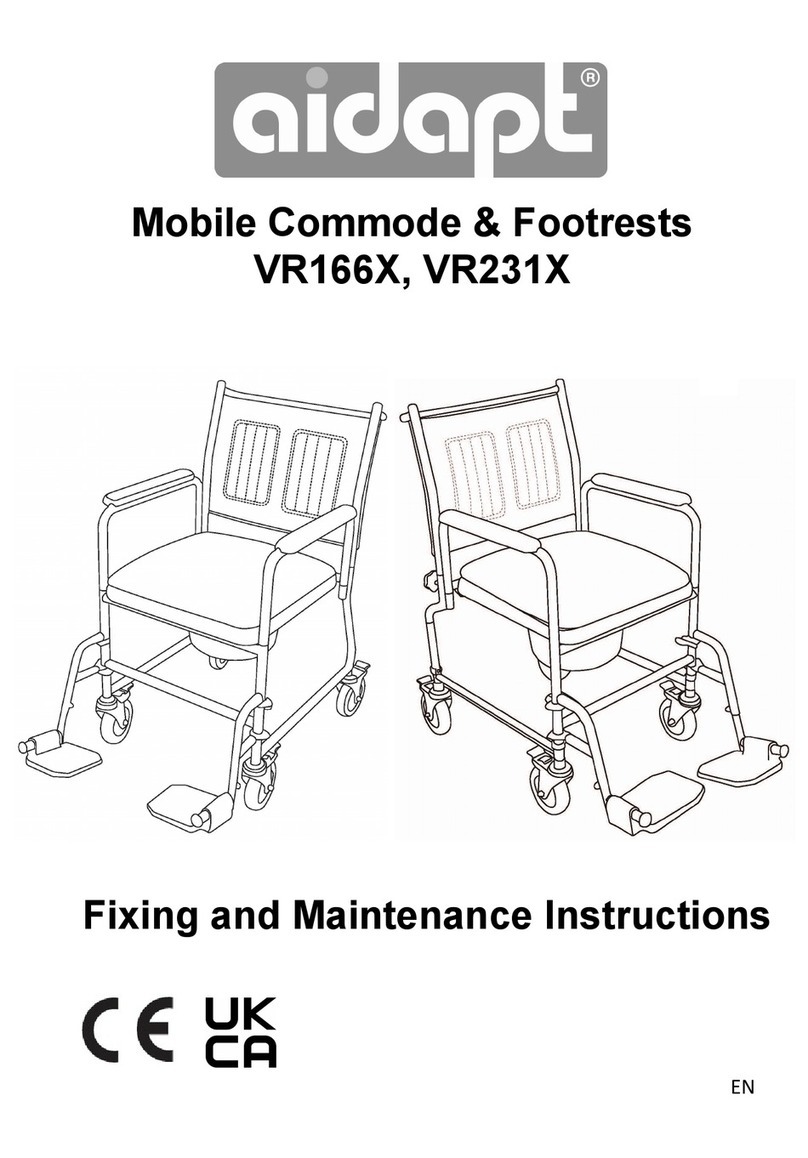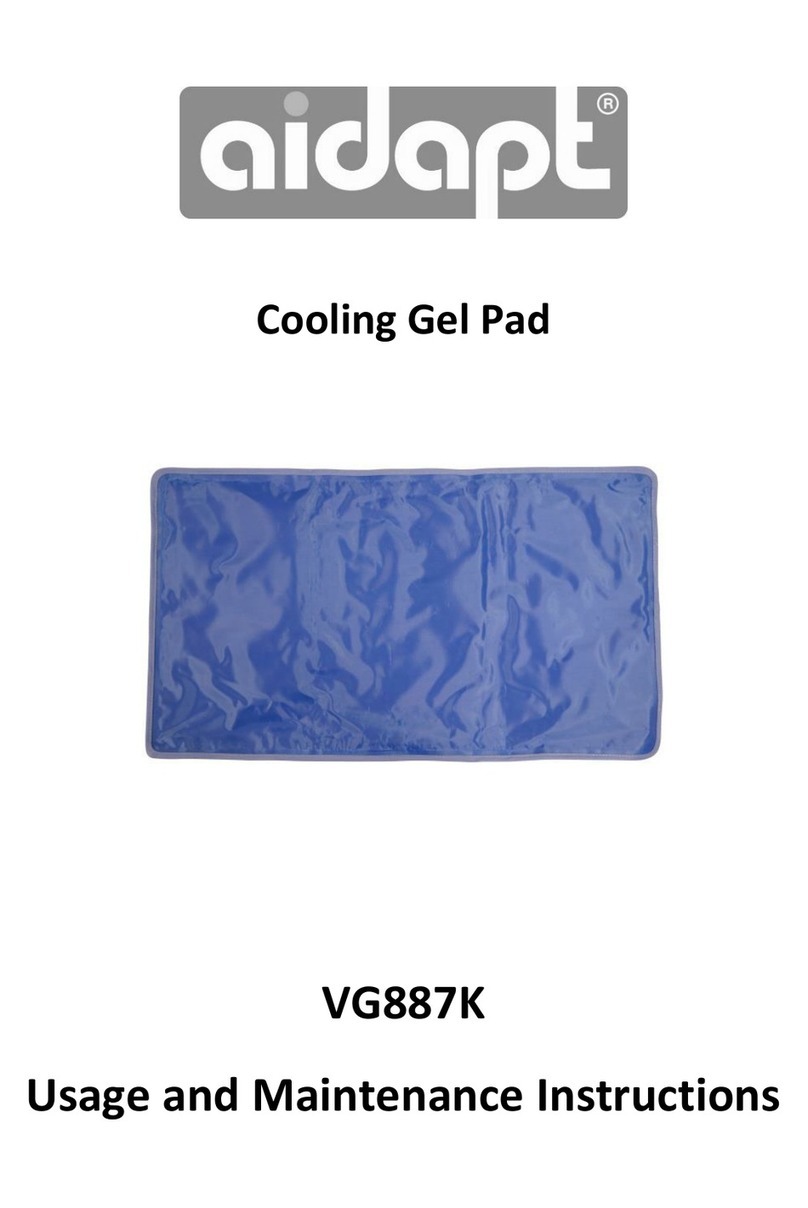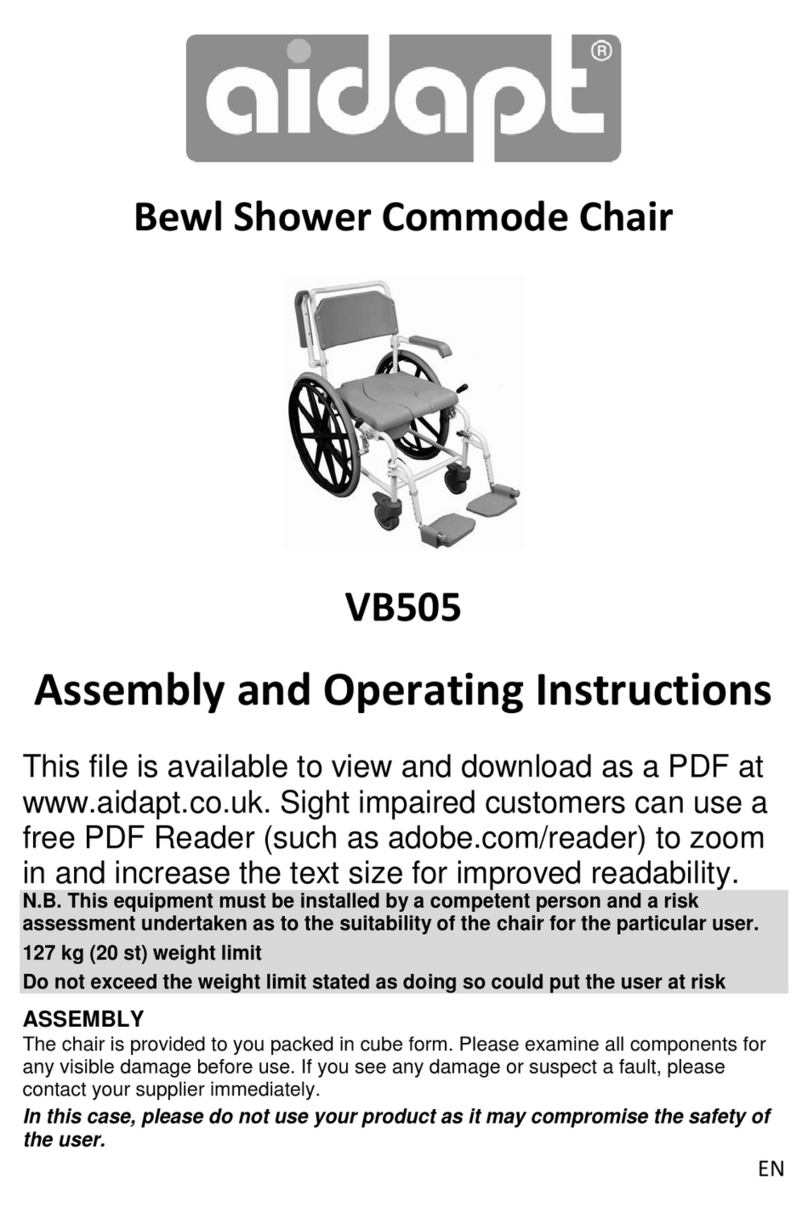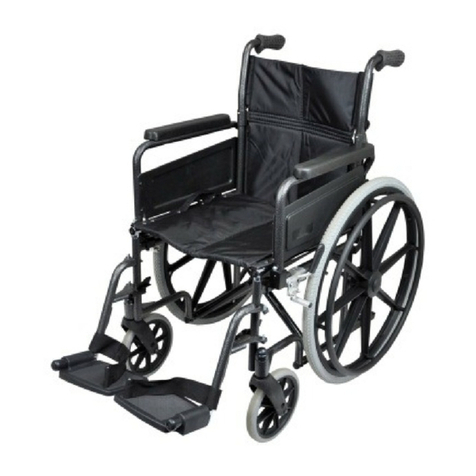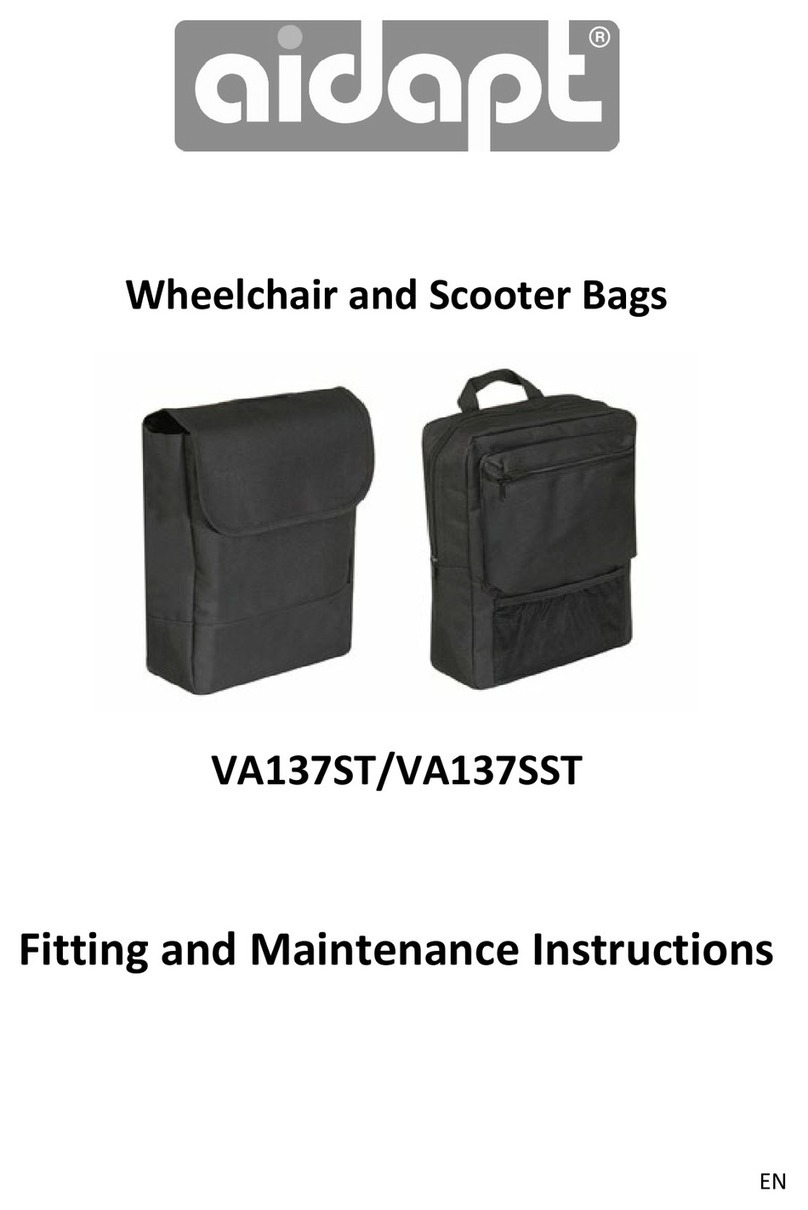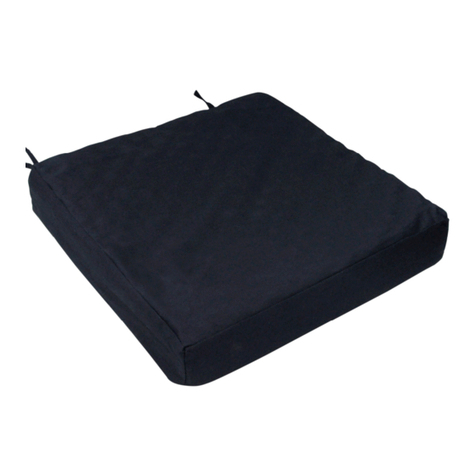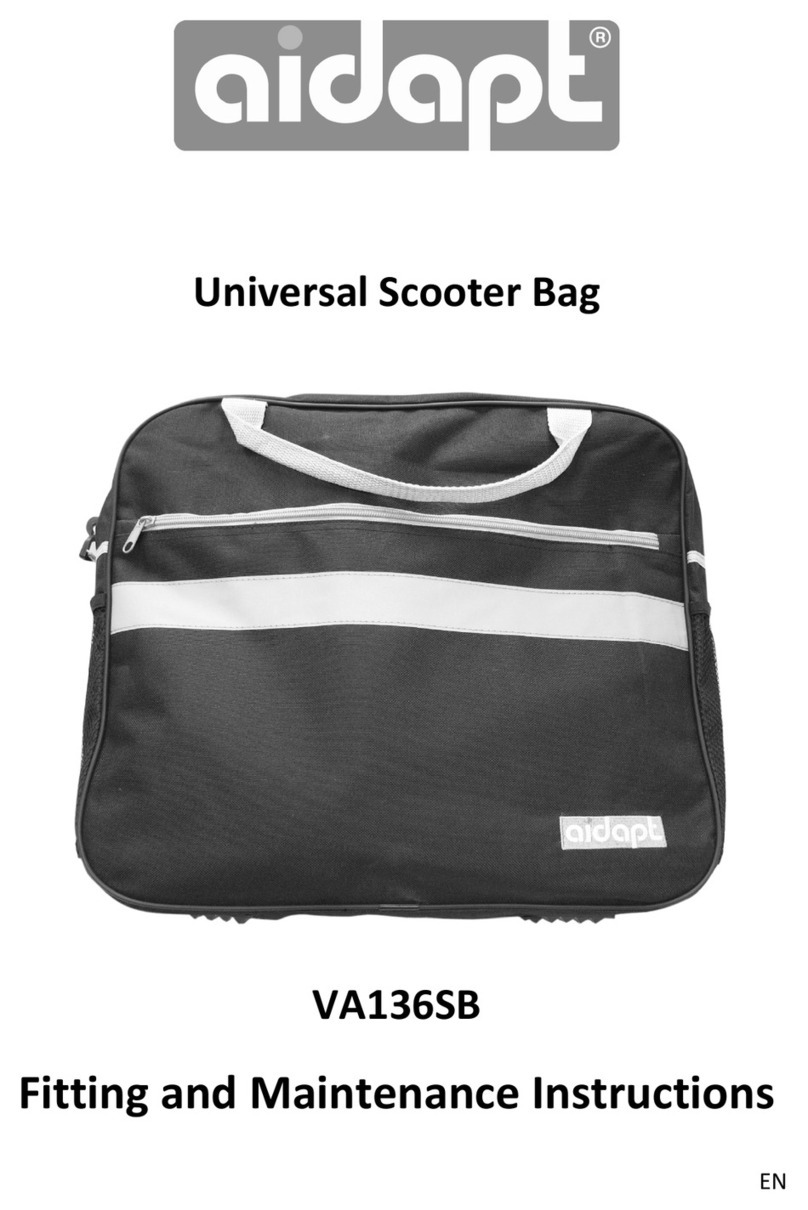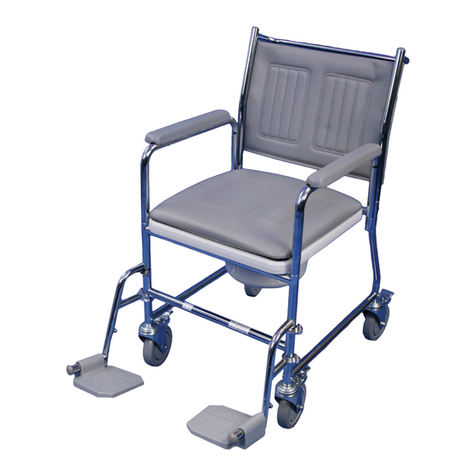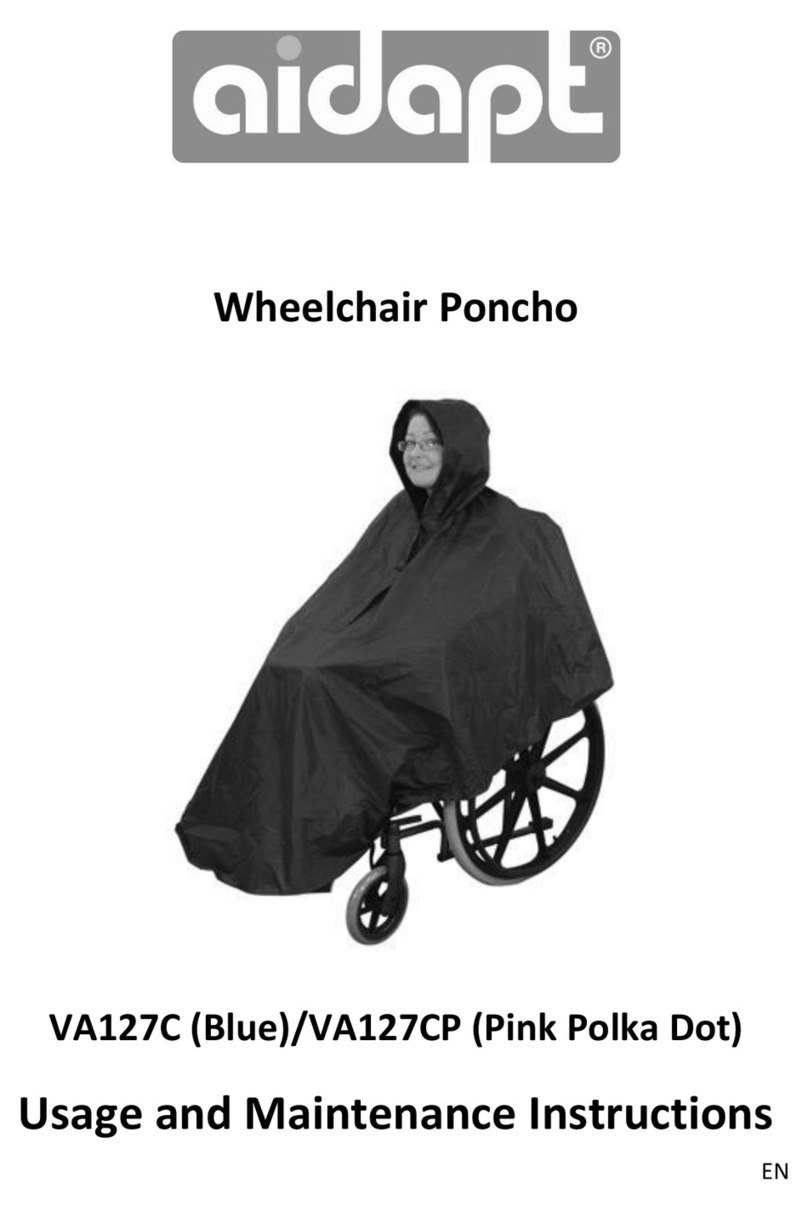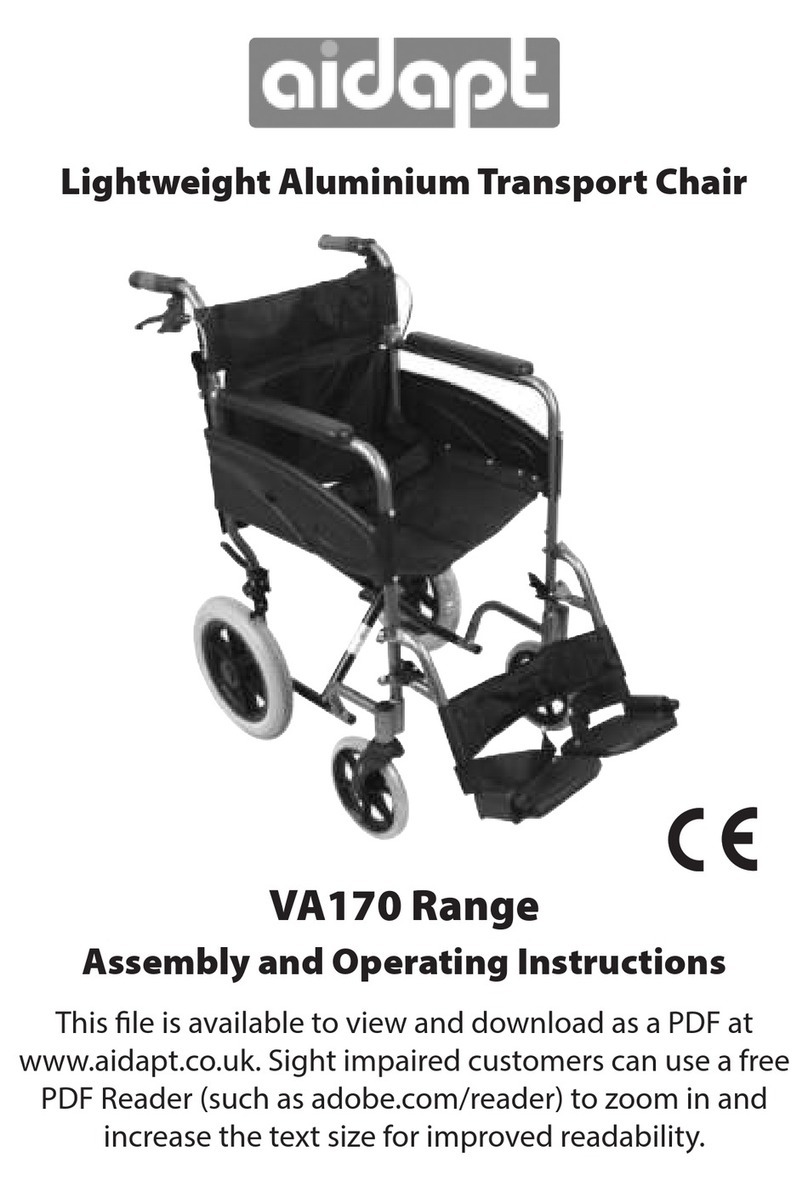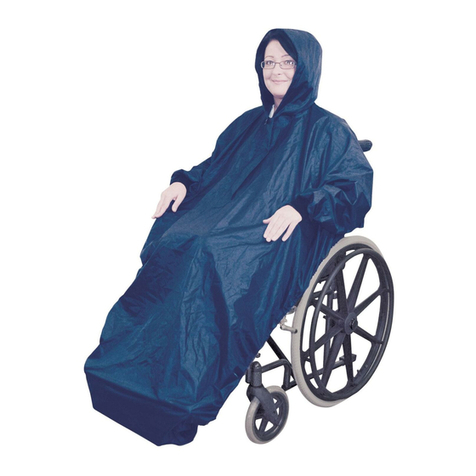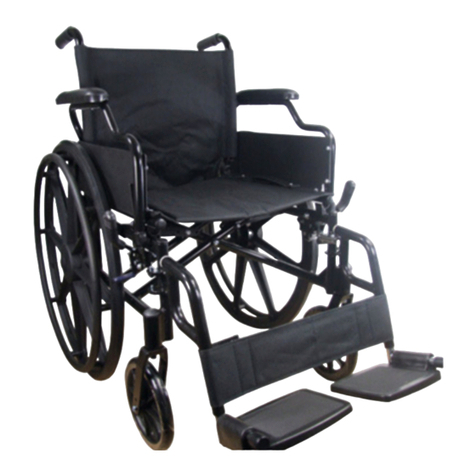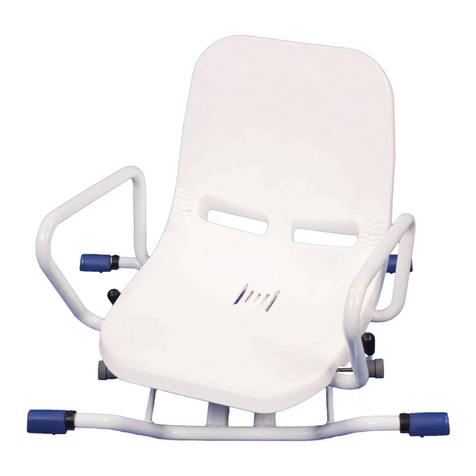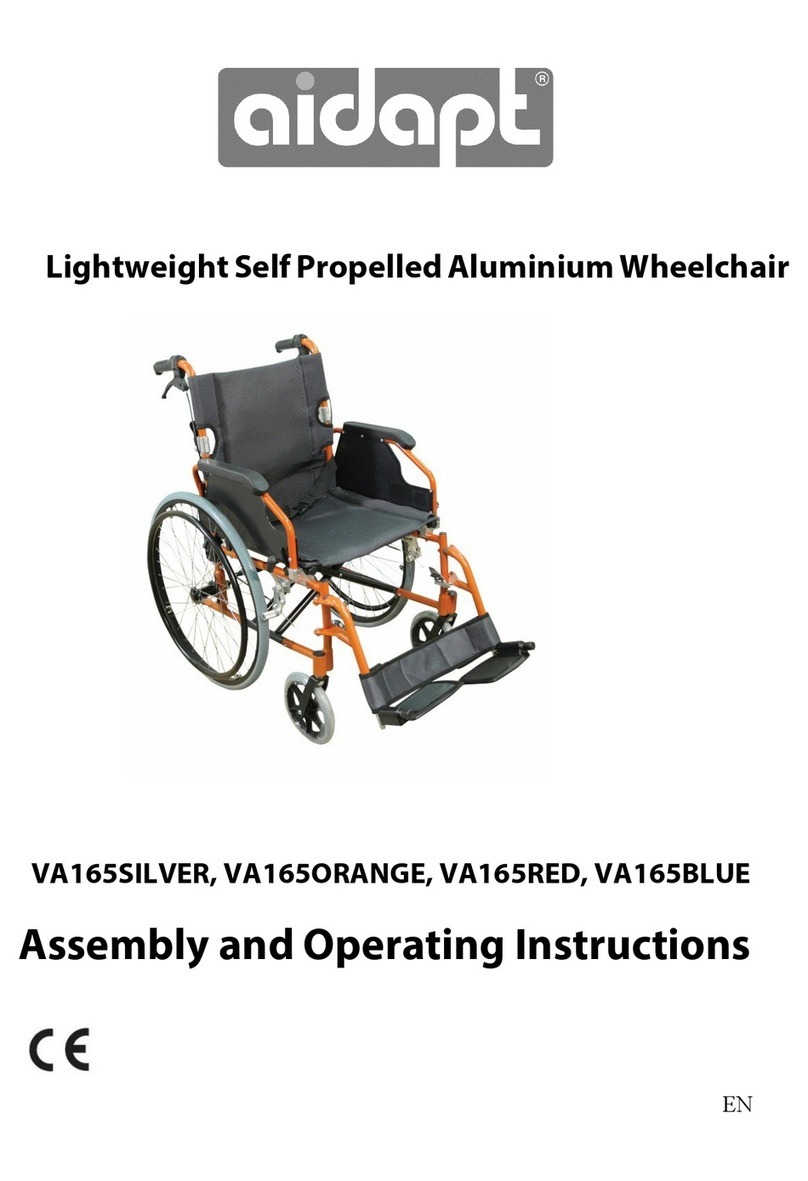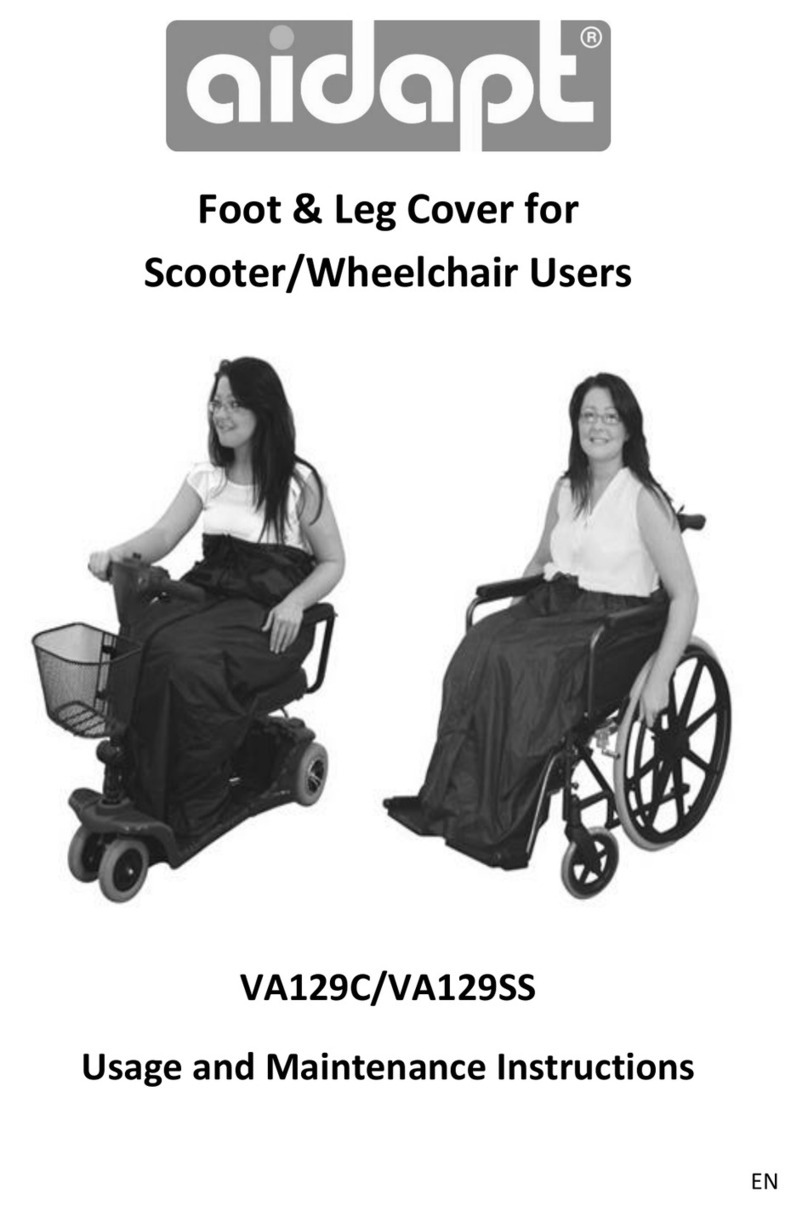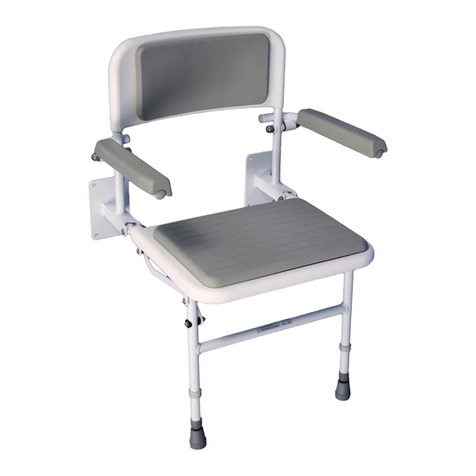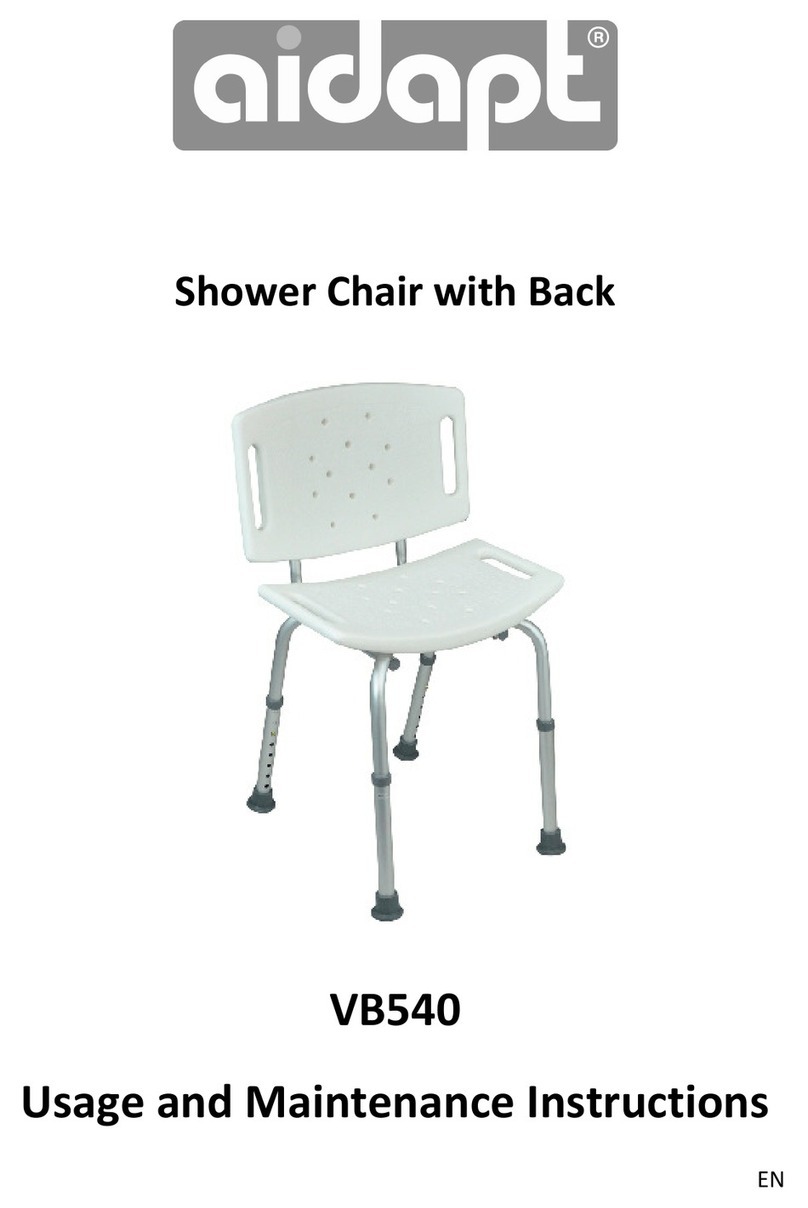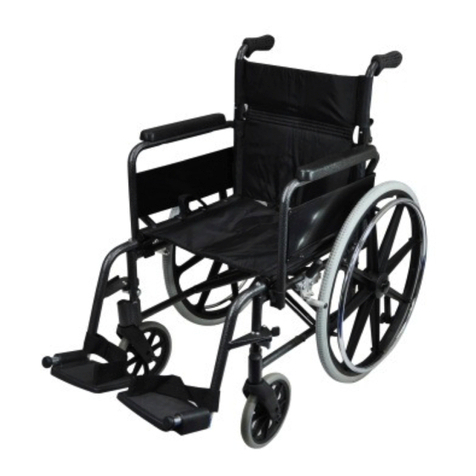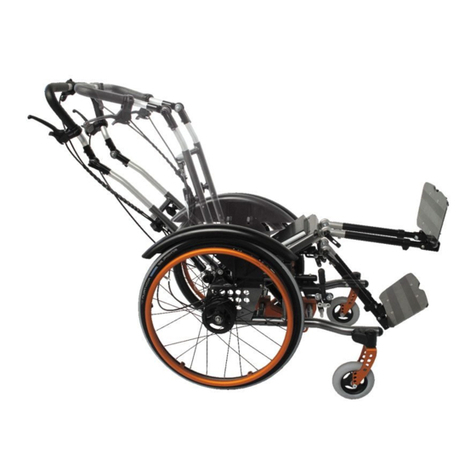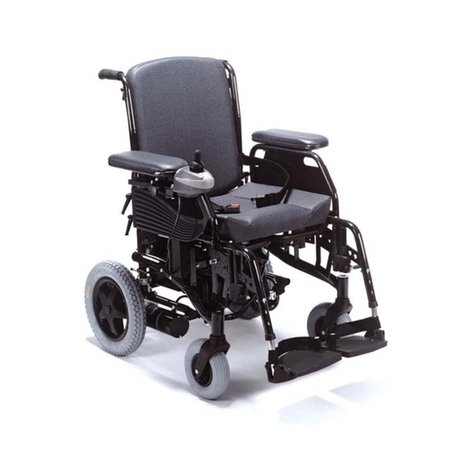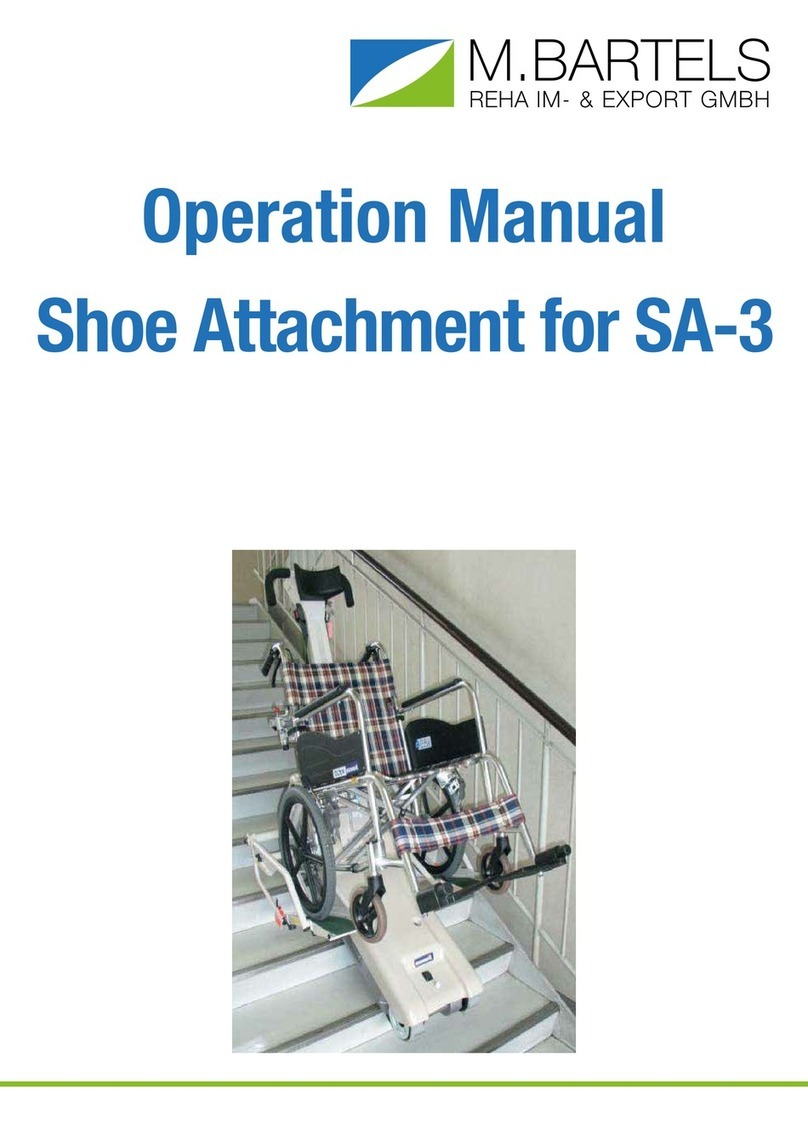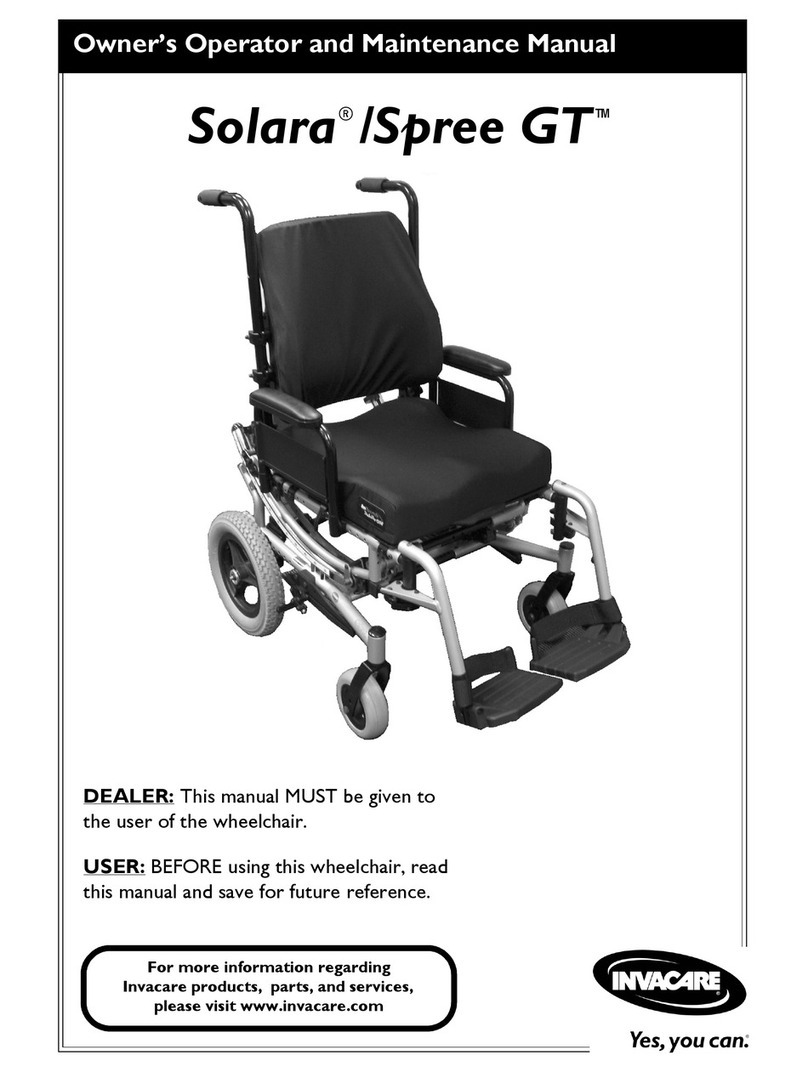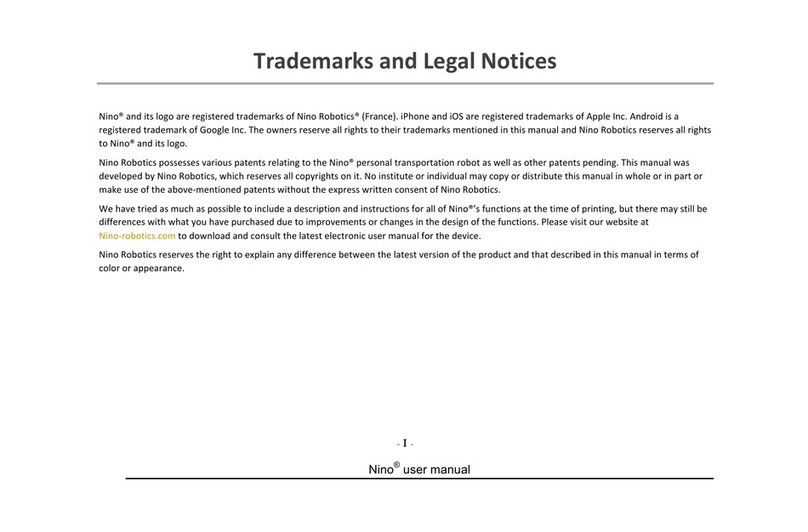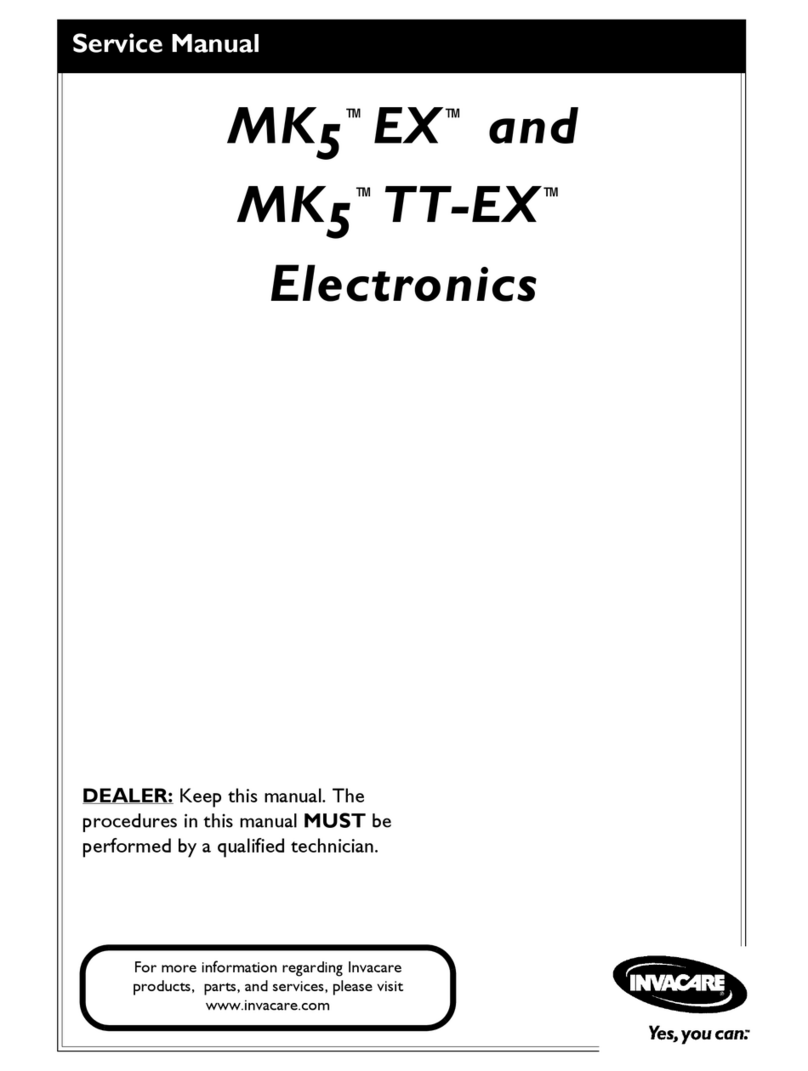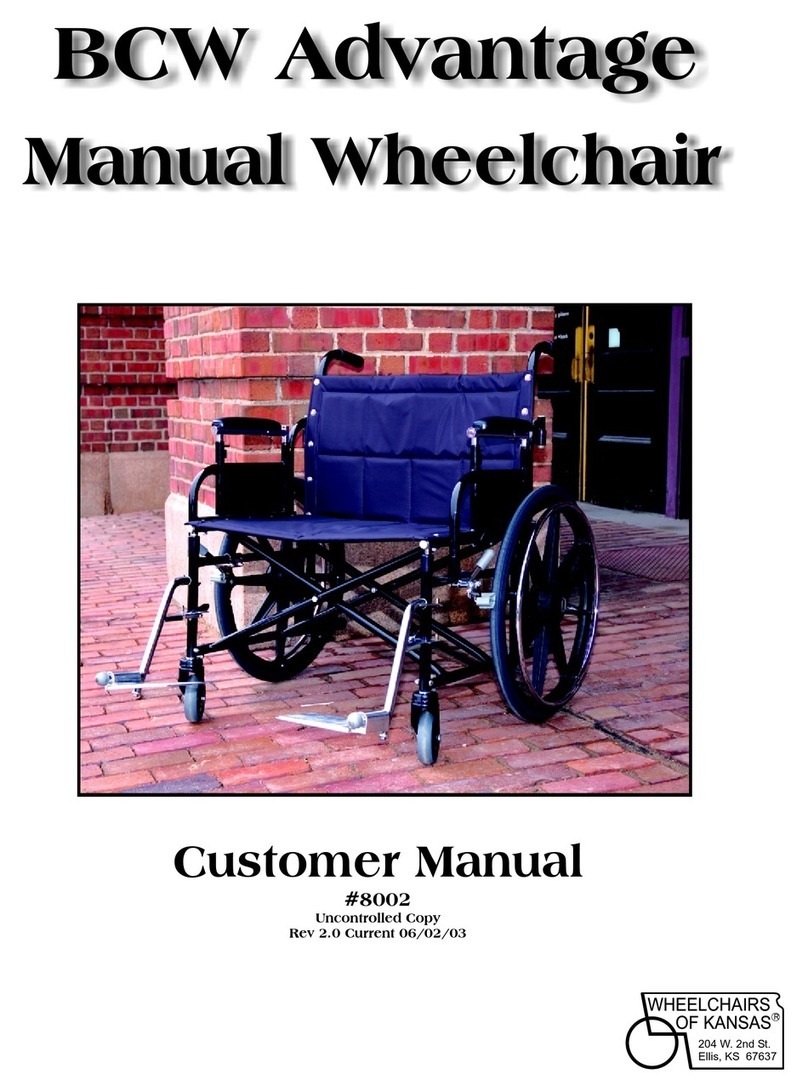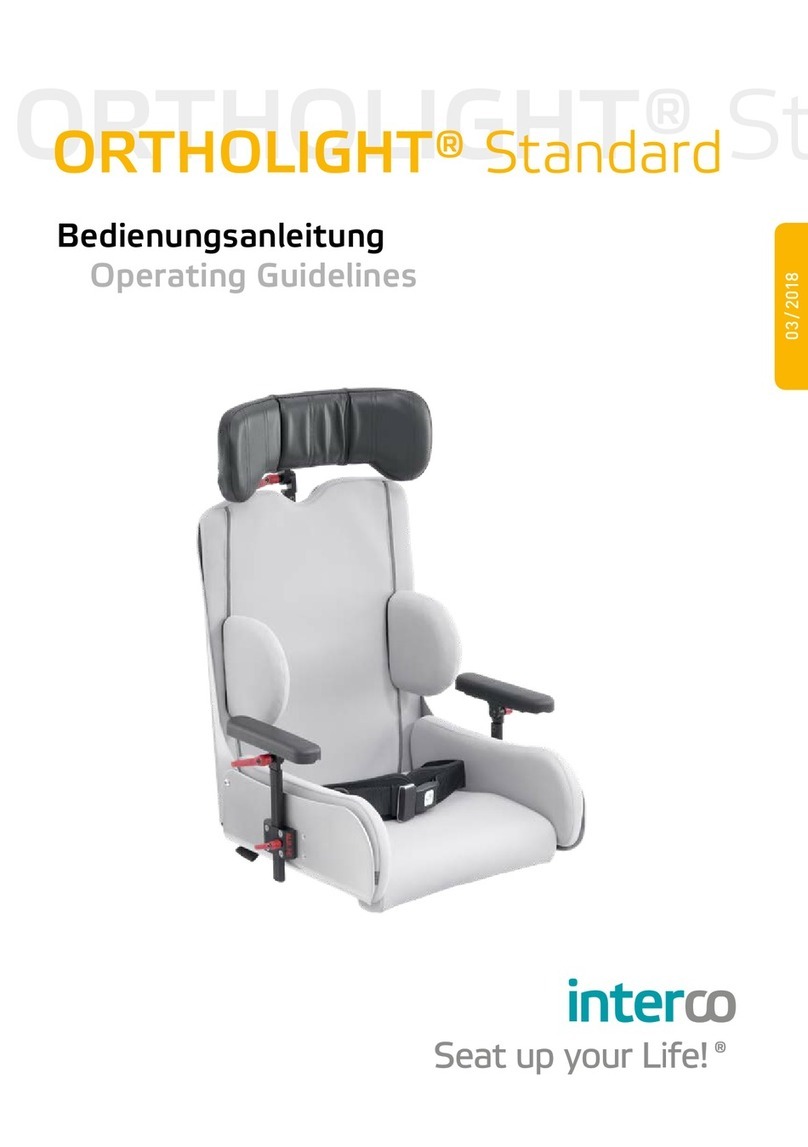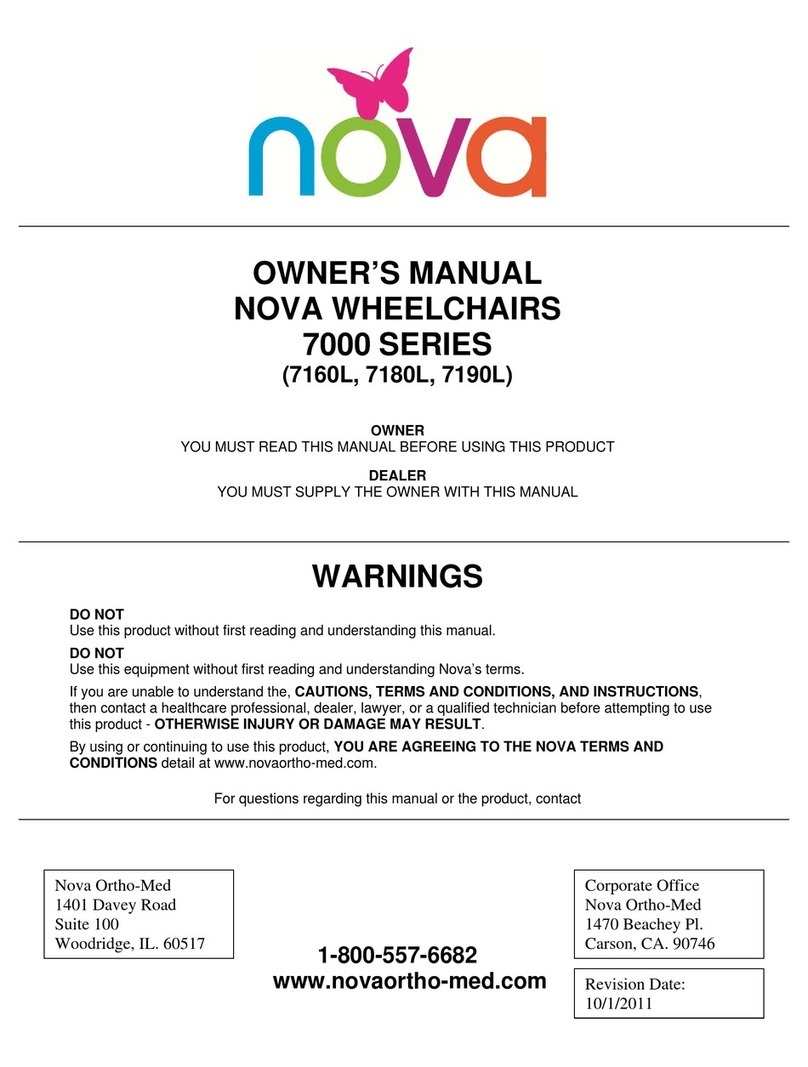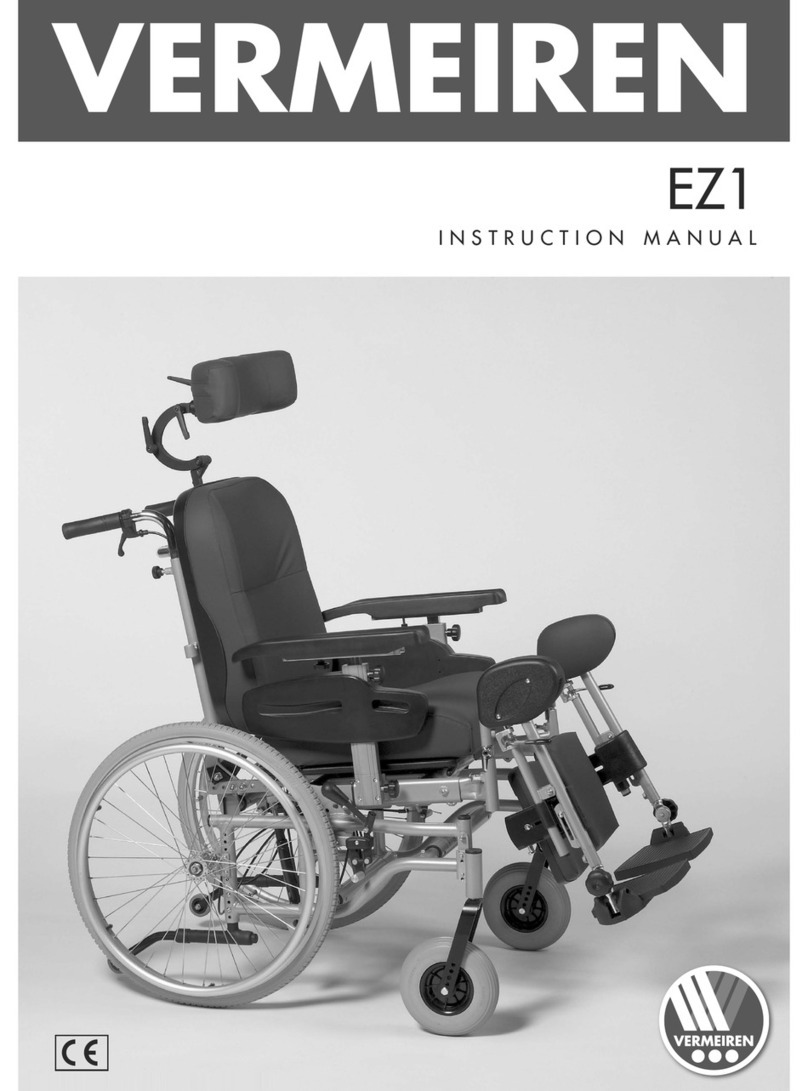
CORRECT USAGE
WARNING: The centre of balance is aected by a change in posture body position or
weight distribution.
Many activities require the transit chair user to reach, bend and transfer into and out of
the chair. These movements will cause a change to normal balance, centre of gravity and
weight distribution of the chair.
The design of your chair enables it to remain stable for normal everyday usage if used
correctly in accordance with the recommendations in this manual.
N.B. Do not stand on the transit chair
1. Reaching/bending forward
Move the chair as close as possible to the object you wish to reach. Position the front
castors so that they are extended as far forward as possible. Fully engage the wheel locks
on the rear wheels. Only reach out to take what is within arm’s length in normal sitting
position. Only the arms should extend beyond the seat of the chair.
2. Reaching/bending backwards
Move the chair as close as possible to the object you wish to reach. Reach back only as far
as your arm will extend without changing your seating position. Do not lean over the top
of the back upholstery as this could change your centre of gravity and may cause you to tip
over.
3. Reaching/leaning sideways
Move the chair as close as possible to the object you wish to reach. Rotate the front castors
to a line in the direction you will be reaching. Fully engage the wheel locks on the rear
wheels to prevent tipping over. Do not shift your weight or sitting position towards the
object you are reaching as it may cause the chair to tip over.
4. Transferring
Before attempting to transfer in and out of the chair, every precaution should be taken
to ensure the gap between the two seats is as small as possible. The chair should be on a
smooth, stable and level area. Be sure to fully engage the wheel brakes when transferring in
and out of the chair or when in an elevator or chair lift. Turn both castors in the direction of
the seat to which you wish to move. Lift up the footplates and fold back the supports to the
side. Do not stand on the footplates. It is imperative that the actual transfer procedure be
supervised by a certied health care professional until the chair owner is familiar with the
procedure.
BRAKE ADJUSTMENT
To adjust the parking brakes
loosen bolt A (as per gure 3b)
and move brake unit sideways
to adjust as required and then
re-tighten bolt A.
Fig. 3B
